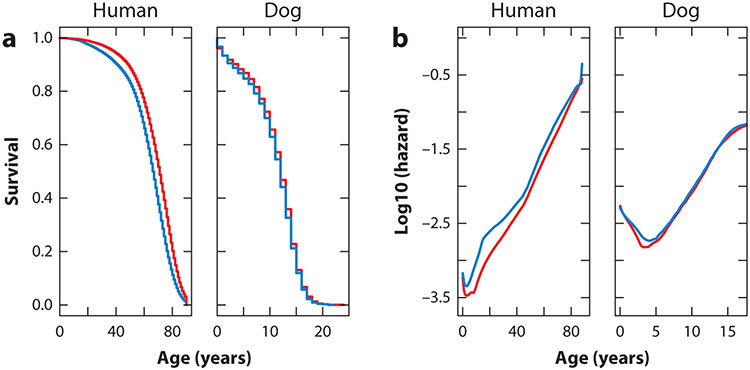Figure 1.
Age-specific (a) survival and (b) mortality for humans and dogs. Females are shown in red and males in blue. Human data are from the US Census Bureau, and canine data are from the VetCompass database. Depending on the breed, dogs are at least 5–10-times shorter-lived than humans. However, as these survivorship and mortality curves illustrate, the effect of age on mortality rate is similar in the two species. Mortality declines after birth and then increases exponentially (a straight line on a log-linear plot, as shown in panel b). Life expectancy is higher in females than in males for both species, though the difference is greater in humans than in dogs. Figure reproduced from Hoffman et al. (87) according to the terms of a Creative Commons CC-BY license.

